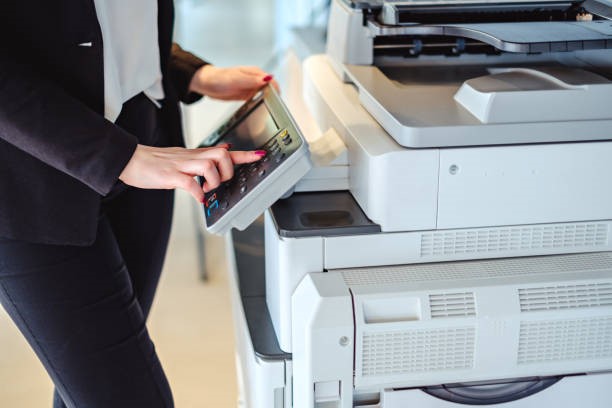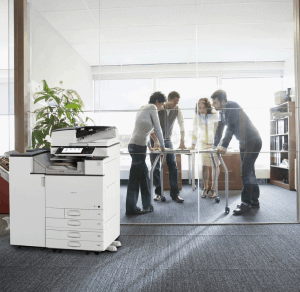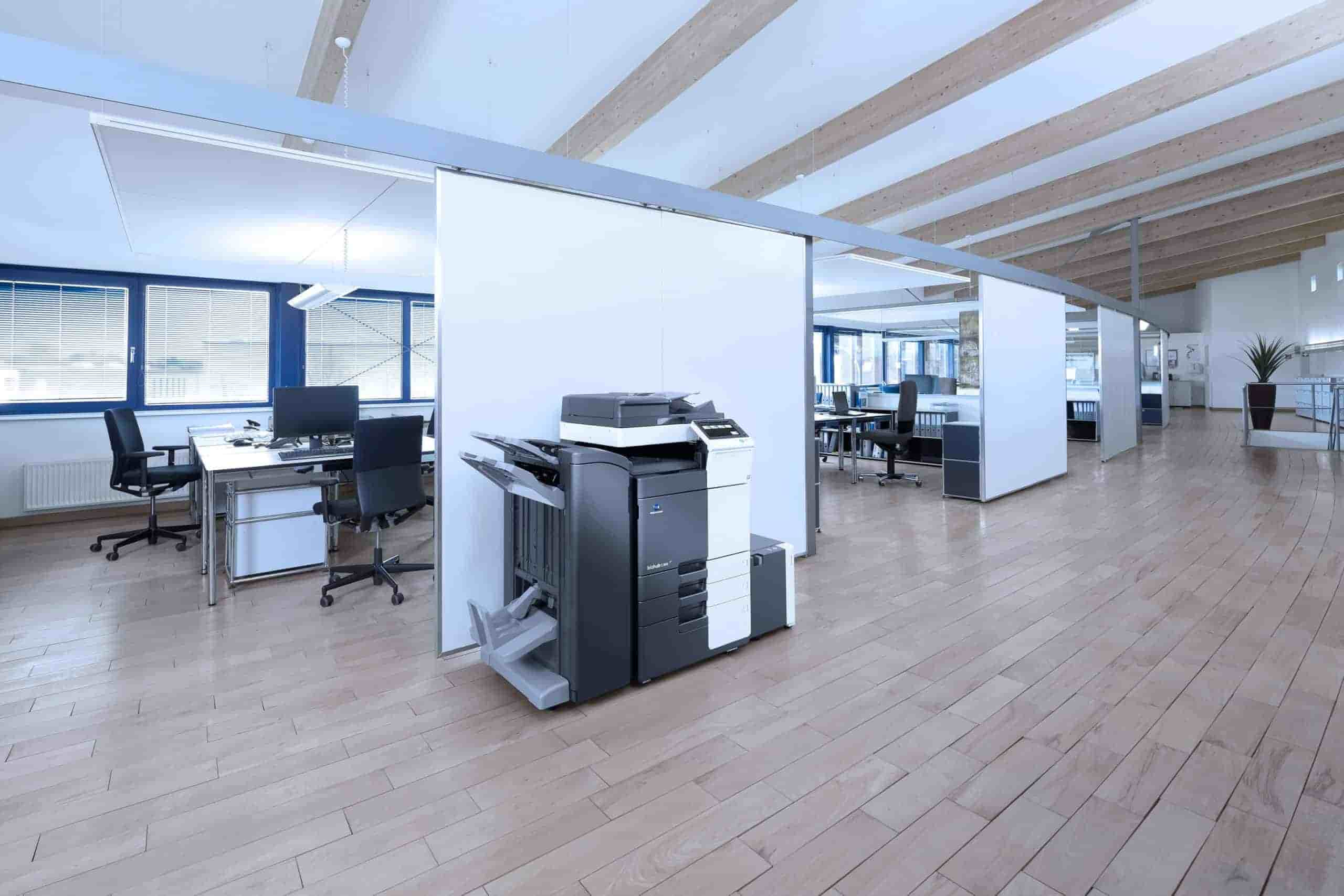
Table of Contents
Introduction to Commercial Copier Lease
In today’s fast-paced business environment, having the right tools at your disposal is crucial. One such indispensable tool is the copier. Whether you’re reproducing documents for a meeting or scanning contracts for digital storage, the humble office copier plays a pivotal role in ensuring smooth operations. However, not every business can afford to purchase one outright, leading many to explore the option of a copier lease.
Commercial copier leasing has become a popular choice for many businesses, from startups to established enterprises. The reasons are manifold:
- Cost-Efficiency: Leasing a copier often means no upfront costs. Instead of a hefty initial investment, businesses can spread the cost over several months or years.
- Flexibility: As technology evolves, so do copiers. Leasing allows businesses to upgrade to the latest printer or copy machine models without the hassle of selling the old one.
- Maintenance and Support: Most leasing agreements come with maintenance packages. This means if your Ricoh or HP machine encounters any issues, support is just a call away.
Given the myriad benefits, it’s no wonder that many businesses opt to lease a copier rather than buy one. However, as with any contractual agreement, the devil is in the details. This is where the importance of negotiation in the leasing process comes into play.

Negotiating a copier lease is not just about getting the best price. It’s about understanding the terms, ensuring flexibility, and maximizing the value for your business. For instance, understanding the cost per copy can significantly impact your monthly expenses. Similarly, choosing the right brand, be it Xerox, Ricoh, or any other, can affect the productivity and efficiency of your operations. To make an informed decision, it’s essential to do your homework.
While the decision to choose a copier for lease might seem daunting, with the right knowledge and negotiation skills, you can ensure that your business gets the best deal. As we delve deeper into this topic, we’ll explore strategies to negotiate like a pro and reveal insider tips to get the most out of your office equipment lease.
Key Negotiation Strategies
Negotiating a copier lease agreement is more than just discussing the price. It’s about understanding the nuances of the deal, ensuring you get the best value, and setting up a mutually beneficial relationship with the leasing company. Here are some key strategies to employ when negotiating your next office copier lease:
Starting with a Higher Ask
It’s a classic negotiation tactic: always start by asking for more than you expect to get. This gives you room to maneuver and make concessions without compromising on your core requirements.
- Price: If you’re hoping to get a monthly cost of $200, start by suggesting $150. This can make the eventual price seem more reasonable by comparison.
- Features: Want a multifunction printer? Start by asking for a high-end model like the Xerox Versalink or Konica Minolta, even if a mid-range model would suffice.
By setting a higher initial ask, you create a buffer, ensuring that even after negotiations, you still land a deal that meets your business needs.
Highlighting the Value of a Long-Term Relationship
Building a long-term relationship with a leasing company can be mutually beneficial. Emphasizing this can be a strong negotiation point.
- Repeat Business: If you foresee needing more copiers and printers in the future, mention this. The promise of future business can lead to better terms on the current deal.
- Referrals: If you have a vast business network, offering to refer the leasing company to peers can be an enticing proposition.
By focusing on the long-term, you can often secure better leasing rates and terms.
Asking for Additional Benefits or Services
Beyond the basic lease, there are often additional benefits or services that can be included:
- Maintenance: Can the leasing company throw in a free service contract?
- Training: Will they provide training on the new copier or office printer?
- Upgrades: Can you get a commitment for a discounted upgrade to a newer model in the future?
Remember, it’s not always about the price. Sometimes, the added value from these services can outweigh a minor cost reduction.
Understanding the Fine Print and Hidden Costs
Every lease agreement comes with fine print, and it’s crucial to understand every clause:
- Early Termination: If you decide to end the lease term early, what penalties are involved?
- Overage Charges: If you exceed the agreed number of copies, how much does it cost per additional copy?
- End of Lease Terms: At the end of the lease, can you buy the copier outright? If not, are there return fees?
Being aware of these details can save you from unexpected costs down the line. It’s always a good idea to consult resources that discuss the intricacies of lease agreements to ensure you’re fully informed.
Negotiating a copier lease requires a blend of strategy, understanding, and foresight. By employing these tactics, you can ensure that you not only get a great deal but also establish a beneficial long-term relationship with your copier leasing company. As we progress, we’ll delve into the post-negotiation steps to ensure that once the ink dries on the contract, you’re set for success.
Preparing for Negotiation
When it comes to leasing an office copier, preparation is key. The more you know about your business needs and the market, the better positioned you’ll be to negotiate a favorable lease agreement. Here’s a step-by-step guide to help you prepare for the negotiation process:
Understanding Your Business Needs
Before even considering entering into a lease, it’s crucial to understand what your business truly needs.
- Printing Volume: Do you need a copier for occasional black and white copies, or does your business demand high-volume color copier printing?
- Functionality: Is a basic copier machine sufficient, or do you require a multifunction printer with scanning, faxing, and other capabilities?
- Duration: How long do you anticipate needing the equipment? The lease period can vary, and understanding your time frame is essential.
By identifying your printing needs, you can ensure the copier or printer you choose aligns with your business’s demands. Choosing the right office equipment can significantly impact your productivity and efficiency.
Researching the Market and Available Options
Once you’ve pinpointed your needs, it’s time to dive into research. The office technology market is vast, with numerous copiers and printers available, each with its unique features and price points.
- Brands: From Konica Minolta to Xerox Versalink and Xerox AltaLink, familiarize yourself with the leading brands and their offerings.
- Leasing Rates: How much does it cost to lease an office copier? Understanding the average cost and monthly cost can help you gauge if a deal is fair.
- Service Contracts: Many leasing companies offer service contracts as part of the lease. These can provide peace of mind by covering maintenance and repairs.
It’s also beneficial to compare the cost of ownership between buying a copier outright and leasing. Websites that provide insights into the pros and cons of buying or leasing office equipment can be invaluable resources during this phase.
Setting a Budget
Budgeting is a critical step in the leasing process. While leasing may seem like a cost-effective solution due to the lack of an upfront cost, there are other expenses to consider:
- Monthly Lease Payments: Determine how much you’re willing to pay monthly. This will depend on the type of copier and its features.
- Per Copy Costs: Some leases charge a per copy fee, especially if you exceed a set number of copies.
- End of Lease Costs: At the end of the lease, you might have the option to buy the copier or return it. Understand any associated costs with these options.
By setting a clear budget, you can avoid surprises and ensure that the monthly lease and other associated costs align with your financial capabilities.
Preparing for a copier lease negotiation involves a deep understanding of your business’s needs, thorough market research, and clear budgeting. By taking these steps, you’ll be well-equipped to get the best deal and select the right equipment that offers the best solution for your business. As we move forward, we’ll delve into the actual negotiation strategies to ensure you’re not just equipped but empowered to secure the best office copier lease for your needs.
Insider Tips for Successful Negotiation
When it comes to negotiating a copier lease, having a few insider tips up your sleeve can make all the difference. Here are some strategies that seasoned negotiators swear by:
Timing Your Negotiation
The timing of your negotiation can significantly impact the terms you secure. For instance:
- End of Month or Quarter: Leasing companies often have targets to meet. Approaching them towards the end of a financial period might get you a better deal as they strive to hit their quotas.
- During Promotions: Keep an eye out for promotions on new copiers or office printers. Companies might offer discounted leasing rates during these periods.
Leveraging Referrals and Testimonials
If you’ve had a positive experience with a leasing company in the past or know someone who has, leverage that:
- Referrals: Mentioning that you were referred by a satisfied customer can sometimes get you preferential terms.
- Testimonials: Offering to provide a testimonial or case study in exchange for better terms can be a win-win.
Building on the power of word-of-mouth and the benefits of long-term business relationships can be a potent negotiation tool.
Being Open to Alternative Solutions
Sometimes, the best deal isn’t the cheapest one. It’s about finding a solution that offers the best value:
- Alternative Models: If the Xerox Versalink is out of your budget, perhaps the Xerox AltaLink offers similar features at a reduced cost.
- Bundled Services: Instead of focusing solely on the lease agreement, consider packages that include maintenance or a service contract.
Knowing When to Walk Away
Not every negotiation will end in a deal, and that’s okay. If the terms don’t meet your business needs or the cost of ownership seems too high, it’s better to walk away and explore other options.
Post-Negotiation Steps
Once you’ve successfully negotiated your copier lease, the journey doesn’t end there. Here’s what you need to do next:
Reviewing and Understanding the Contract
Before entering into a lease, thoroughly review the agreement:
- Lease Term: How long is the lease? What happens at the end of the lease?
- Costs: Understand the monthly cost, any upfront costs, and potential hidden fees.
- Service and Maintenance: Does the lease include a service contract? Who is responsible for repairs and maintenance?
Setting Reminders for Key Dates
Staying on top of key dates can save you from potential pitfalls:
- End of Lease: Know when your lease ends to avoid automatic renewals or penalties.
- Renewal Options: If you’re happy with the copier or printer, you might want to renew the lease. Set a reminder to review terms in advance.
Building a Relationship with the Leasing Company
A positive relationship with your leasing company can lead to better terms in the future. Regular check-ins and feedback can foster mutual trust and understanding.
What People Also Ask
What is the average duration of a commercial copier lease?
The typical duration for a commercial copier lease ranges from 12 to 60 months, with 36 months being the most common. The exact term can vary based on the model and the leasing company’s terms.
Can I renegotiate my lease terms midway?
While most lease agreements are fixed for the duration of the term, some leasing companies might be open to renegotiation, especially if business circumstances change. However, it’s essential to approach this with a clear rationale.
What are the common hidden costs in copier leases?
Hidden costs can include overage charges if you exceed the agreed number of copies, maintenance fees not covered by the service contract, and fees associated with ending the lease early or choosing not to buy the copier at the end of the term.
How do I handle disputes with the leasing company?
If a dispute arises, it’s best to first approach the leasing company directly and discuss your concerns. If that doesn’t resolve the issue, referring to the dispute resolution clause in your lease agreement can provide guidance on the next steps.
Contact us for Copier or Printer Leasing
Conclusion
Navigating the intricate world of commercial copier leasing can initially seem daunting. However, with the right knowledge, preparation, and negotiation strategies, businesses can secure deals that align perfectly with their operational needs and budgetary constraints. It’s essential to remember that leasing is not just a transaction but a partnership between the lessee and the leasing company.
By understanding one’s business needs, being diligent in research, and fostering a relationship built on trust and mutual benefit, companies can ensure they get the most out of their lease agreements.
Moreover, being proactive in post-negotiation steps, from thoroughly reviewing contracts to setting reminders for key dates, can prevent potential pitfalls and ensure a smooth leasing experience. In the ever-evolving landscape of office technology, where the next best copier or printer is just around the corner, leasing offers flexibility and peace of mind.
Whether you’re a startup looking for your first office printer or an established enterprise considering an upgrade, the journey of leasing can be made seamless with the right approach. As with all business decisions, informed choices, backed by research and foresight, will always pave the way for success.


